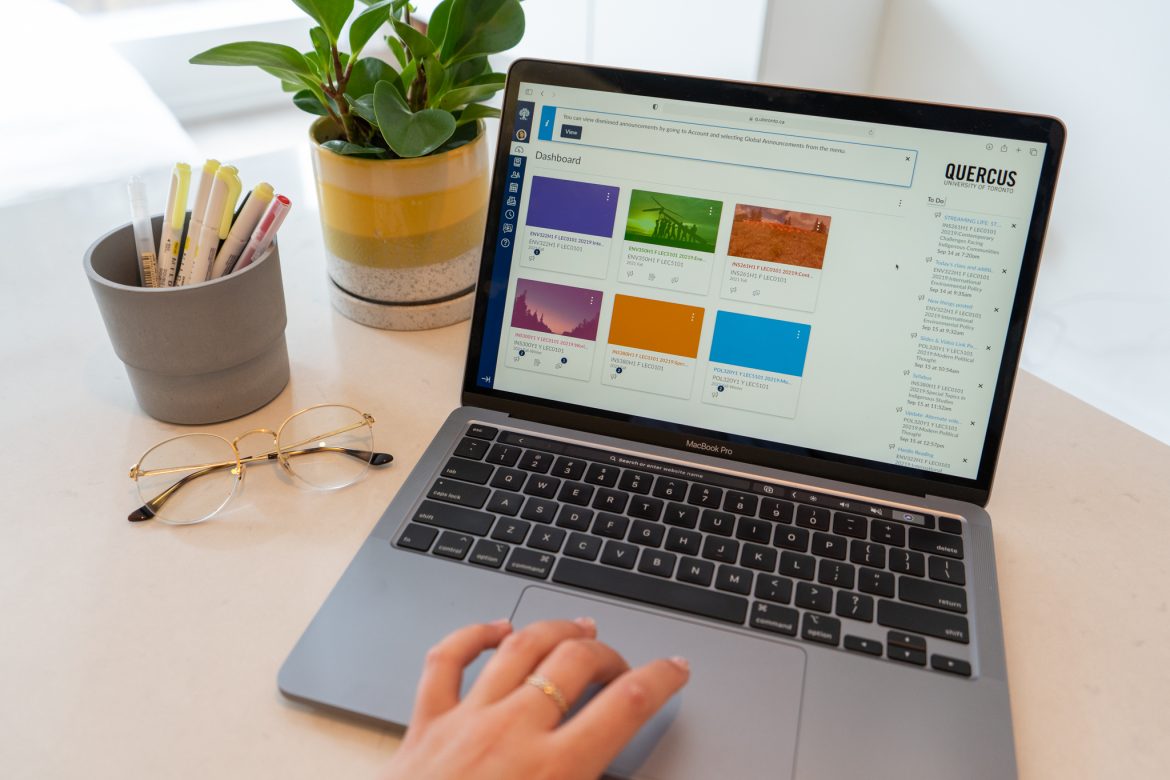Photo Credit: Samantha Hamilton, Photo Editor
The challenges faced while getting back to a “pre-pandemic” routine.
Alessia Baptista, Managing Editor
As many of you know, U of T’s back to school plans are taking a hybrid approach this year, leaving students and faculty with a mix of online and in-person learning methods. Considering everyone has taken part in working and learning remotely this past year, the idea of getting back to any sense of normalcy that we experienced pre-pandemic sounds rather appealing. But how convenient is U of T’s plan, really?
As announced by Melanie Woodin, Dean of Arts and Science: “All students in Arts & Science will be permitted to attend their classes online from the start of the Fall Term on September 9, until and including September 23.” Thinking about our large community here at U of T, this decision gives international students a chance to get settled into campus, and it also gives a little extra time for people to receive their vaccinations before coming to campus.
U of T’s decision to offer a mix of online and in-person classes is beneficial in certain ways. While the majority of Ontario has been vaccinated, and the university requires at least one dose of the vaccine to be present on campus, COVID-19 is still very much present. So the ability to take an online (a)synchronous course limits the exposure to COVID-19 for those who choose to work from home. Despite the option to study remotely, though, it would be nice for all students to be on campus and learning in-person.
As a commuter student myself, this hybrid model has its ups and downs. For example, I’m lucky enough to have one day in the week where I’m online all day, and another day off completely; both situations allow me to stay home. It saves a few transit fares (which add up quickly) and gives me a day off to catch up on work. The only downside is having classes back-to-back — one online and the next on campus, with only the standard 10 minutes to travel from place to place. With the restrictions in U of T’s buildings designed to limit exposure to COVID-19, libraries don’t operate at regular capacity. As a result, scrambling to find a place to attend class online is a bit challenging, especially as a commuter.
However, I can say that being able to go to a library again and study is exhilarating. Quite honestly, being anywhere that isn’t my bedroom is a win-win for me. Going to the library and common rooms on campus gives me the opportunity to have a little more separation between my work space and my home space, two areas that have merged to become one throughout the pandemic. This amalgamation of work and study spaces has impacted my productivity as a student: being in the same environment, for work and rest alike, carried stressful feelings from school into the relaxing comfort of my home.
The University of Southern Queensland, Australia, further emphasizes the importance of varied work spaces: “Your environment can not only aid your efficiency but also impact whether you complete work at all.” The University of Toronto’s decision to reopen campus provides students with an opportunity to use campus resources such as libraries and lecture halls, which enhances the learning experience. Most students are probably much more able to pay attention in lecture halls than they are in their bedrooms.
Undoubtedly, in-person classes come with their own anxieties. After a year of interacting with people through a screen, it’s going to take a few days (or more) to relearn how to actually talk to others. Especially as students, we can no longer hide behind a screen or type answers in the chat.
While getting comfortable with in-person learning again brings its own challenges, for many of us it’s just a matter of getting back into the routine of in-person university life. These interactions with classmates and professors not only further develop our social skills but are also crucial in maintaining good mental health.
That’s not just an opinion. Science Table, a Toronto-based science blog hosted by the Dalla Lana School of Public Health, states: “In-person schooling is optimal for the vast majority of students because it enables access to a wide range of academic and social-emotional learning opportunities, promotes positive peer relationships, physical activity, and positive mental health.”
Overall, U of T’s decision to reopen benefits the entire university community. Athletic facilities are open, so students can access U of T’s gyms: places to wind down and take care of ourselves mentally and physically. Being surrounded by other students and having the ability to sit in a lecture hall brings back fond memories of the pre-pandemic university culture. In-person activities allow students and faculty to thrive in an academic environment. We’ve all just experienced a year and a half of remote learning, and it truly took a toll on our community in more ways than one. For now, all we can do is hope that the university remains open and that we don’t face another lockdown anytime soon.
Disclaimer: The opinions expressed in this article are that of the author. They are not necessarily representative of the views or values of The Mike.




